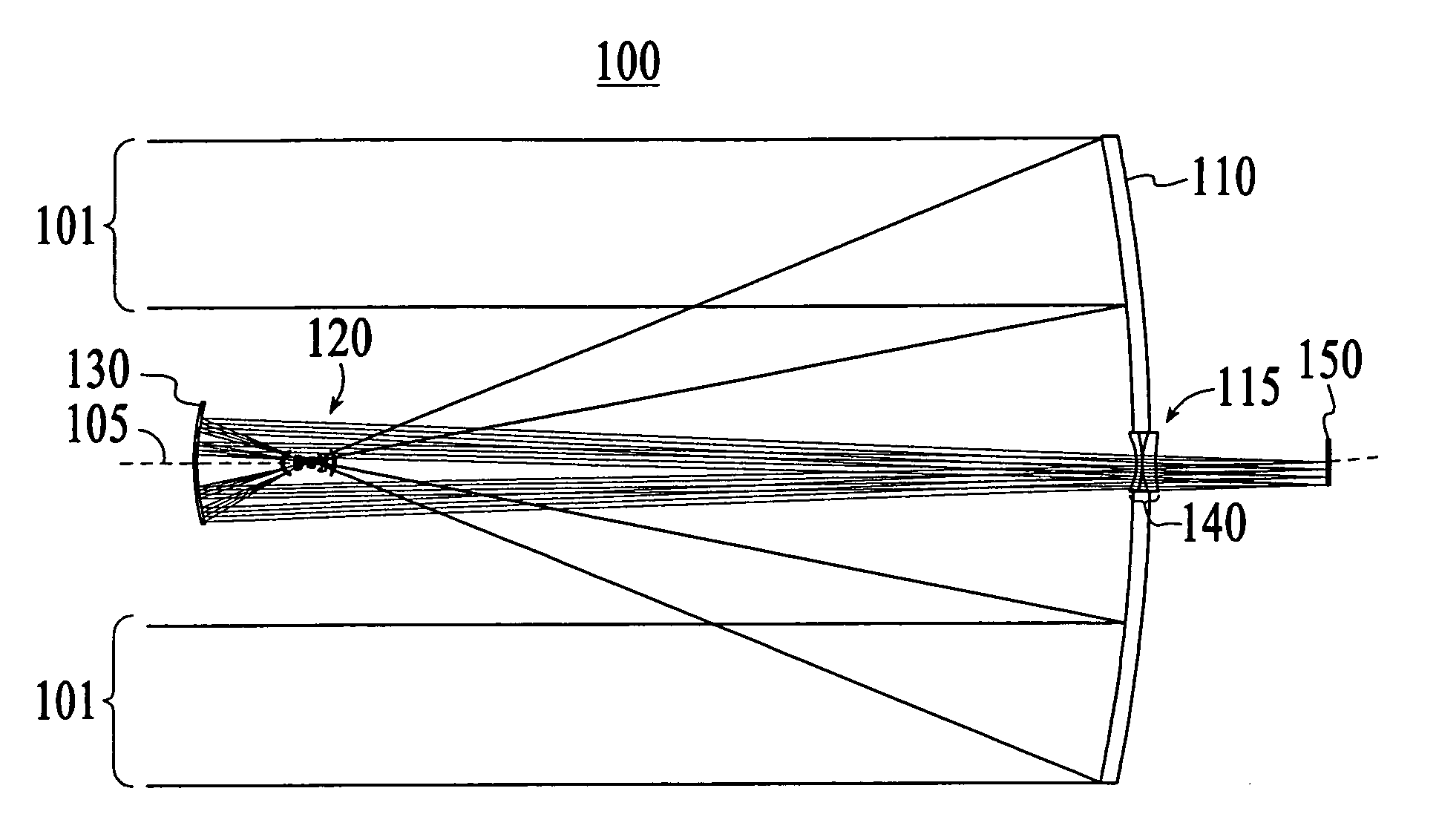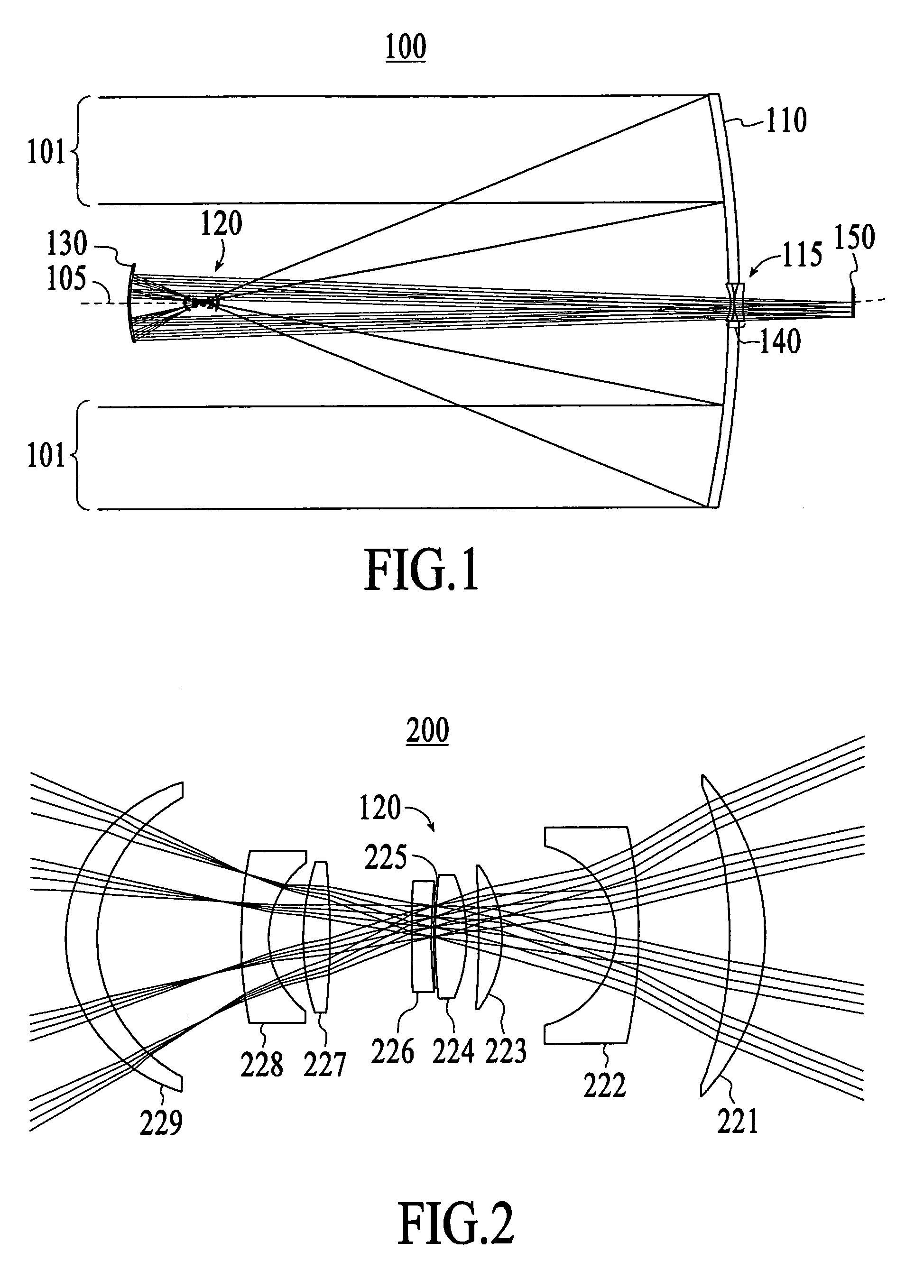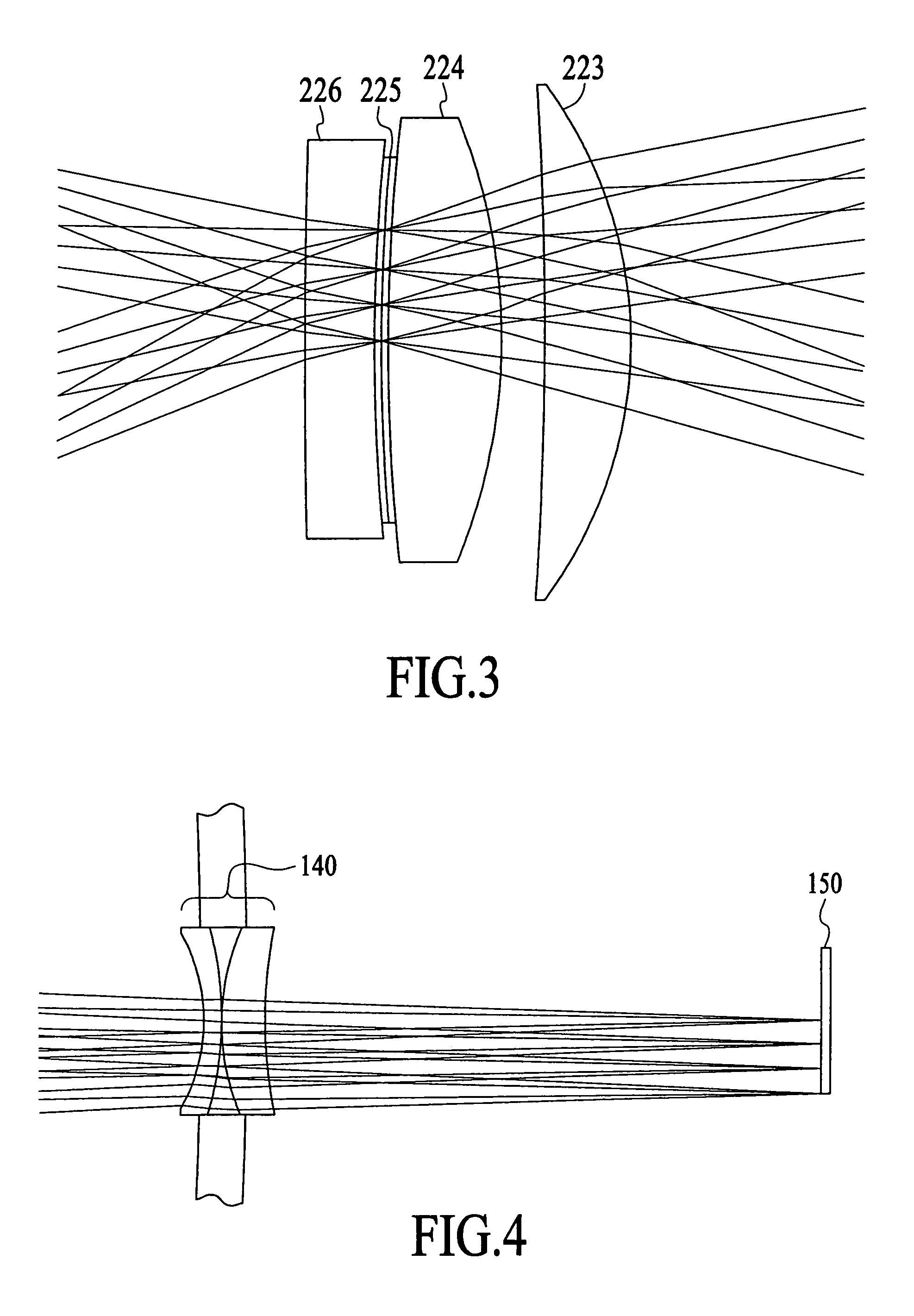Gregorian optical system with non-linear optical technology for protection against intense optical transients
a non-linear optical technology, applied in the field of optical systems, can solve the problems of reducing the size of the non-linear optical material necessary to provide protection, affecting the image quality, and affecting the efficiency of optical transmission, so as to improve the image quality, improve the light concentration, and improve the effect of image quality
- Summary
- Abstract
- Description
- Claims
- Application Information
AI Technical Summary
Benefits of technology
Problems solved by technology
Method used
Image
Examples
Embodiment Construction
[0016]The basic Gregorian telescope design consists of a concave primary mirror followed by a concave secondary mirror which is located after the focus of the primary mirror (the prime focus or intermediate focus). The secondary mirror re-focuses the image to a final image plane and slows the overall optical system focal ratio. Gregorian telescopes have been traditionally disfavored because of optical aberrations. The uncorrected Gregorian system has a poor image quality off axis and a rather narrow field of view. Both result in part from the inherent tendency of the Gregorian telescope to have a curved focal surface due to the overall system Petzval radius being non-zero. These problems are also addressed by some embodiments of the present invention, as described below.
[0017]FIG. 1 shows one embodiment of a modified Gregorian telescope 100 in accordance with the present invention. This design is applicable to systems with focal lengths from a fraction of a meter to hundreds of mete...
PUM
 Login to View More
Login to View More Abstract
Description
Claims
Application Information
 Login to View More
Login to View More - R&D
- Intellectual Property
- Life Sciences
- Materials
- Tech Scout
- Unparalleled Data Quality
- Higher Quality Content
- 60% Fewer Hallucinations
Browse by: Latest US Patents, China's latest patents, Technical Efficacy Thesaurus, Application Domain, Technology Topic, Popular Technical Reports.
© 2025 PatSnap. All rights reserved.Legal|Privacy policy|Modern Slavery Act Transparency Statement|Sitemap|About US| Contact US: help@patsnap.com



